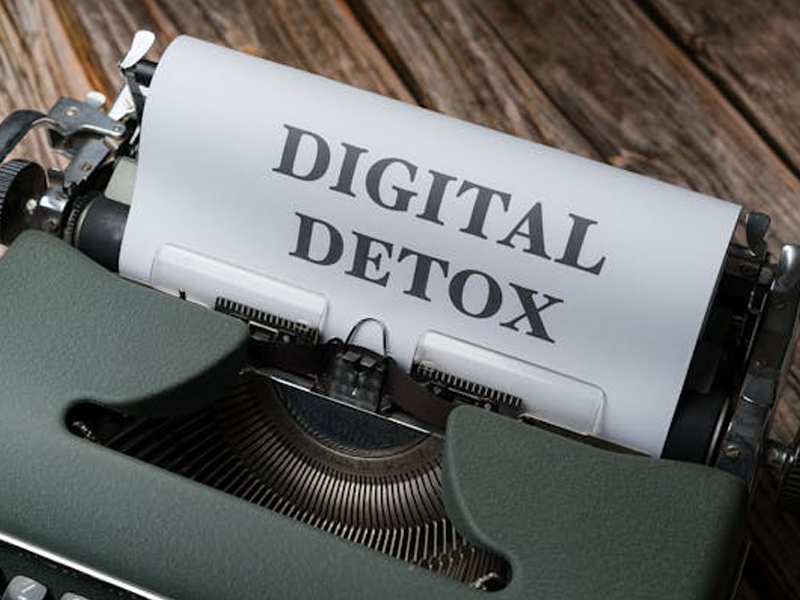Power Down to Power Up: How a Digital Detox Benefits You and the Planet

Tech Gadgets
Rebooting Your Mental Health
The constant stimulation of the digital world can be mentally exhausting. Studies have linked excessive screen time with anxiety, depression, and sleep disturbances. A digital detox allows you to:Reduce stress and improve focus
Constant notifications and information overload can hinder your ability to concentrate. Disconnecting allows your mind to relax and refocus on the present moment.Boost sleep quality
 The blue light emitted by screens disrupts melatonin production, a hormone crucial for sleep regulation. A digital detox before bed can significantly improve sleep quality and leave you feeling more energized.
The blue light emitted by screens disrupts melatonin production, a hormone crucial for sleep regulation. A digital detox before bed can significantly improve sleep quality and leave you feeling more energized.
Enhance self-esteem
Social media can fuel feelings of inadequacy through unrealistic portrayals of others’ lives. Taking a break can help you appreciate your own life and cultivate self-worth.Increase mindfulness
Disconnecting allows you to be more present in the real world. You can savor the beauty of nature, engage in meaningful conversations, and experience life more fully.Powering Down for a More Sustainable Future
Our tech-fueled world comes at an environmental cost. Here’s how a digital detox can contribute to a greener planet:Reduced energy consumption
Devices require constant power to function, and data centers housing our digital world consume vast amounts of energy. Reducing screen time translates to lower energy use, mitigating your carbon footprint.Extended device lifespan
The constant strain of heavy use shortens the lifespan of electronic devices. Taking breaks reduces wear and tear, leading to less frequent replacements and lower e-waste generation.Responsible resource mining
Manufacturing electronics utilizes rare earth minerals mined under potentially hazardous conditions. By extending device lifespans, we can lessen the demand for these resources.Curbing planned obsolescence
Tech companies often release new devices with minimal upgrades, encouraging frequent replacements. Disconnecting challenges this cycle, reducing the pressure to constantly upgrade.Getting Started with Your Digital Detox
 Ready to unplug and recharge? Here are some tips for a successful digital detox:
Ready to unplug and recharge? Here are some tips for a successful digital detox:
Start small
Aim for a few hours a day or a device-free weekend to get acclimated.Communicate clearly
Let friends, family, and colleagues know about your detox to avoid misunderstandings.Find alternative activities
Replace screen time with hobbies you enjoy, like reading, spending time outdoors, or engaging in creative pursuits.Embrace nature
Immerse yourself in the natural world. Go for walks, hikes, or simply sit in a park and soak up the fresh air and sunshine.Practice mindfulness techniques
Meditation and yoga can help you manage cravings for screen time and promote relaxation. In today’s hyperconnected world, a digital detox is no longer a luxury, but a necessity. By taking a break from technology, you can improve your mental well-being while making a positive impact on the environment. So, power down, step outside, and rediscover the world (and yourself) that exists beyond the screen. Remember, a digital detox is a personal journey. Find what works best for you and create a healthier, more sustainable way to interact with technology.Frequently Asked Questions?

01
AR and VR
Exploring the Real-World Uses of Augmented Reality
May 18, 2024

01
Blockchain
The Industrial Metaverse: Revolutionizing Manufacturing and Beyond
May 17, 2024

01
Cybersecurity
Don’t Get Hacked: Update Your LiteSpeed Cache Plugin Immediately
May 16, 2024

01
AI & ML
President to Announce $3.3 Billion Investment for AI Data Center by Microsoft
May 14, 2024
SUSBSCRIBE TO OUR NEWSLETTER
Join our subscribers list to get the latest news and special offers.
Exploring the Real-World Uses of Augmented Reality
The Industrial Metaverse: Revolutionizing Manufacturing and Beyond
Don’t Get Hacked: Update Your LiteSpeed Cache Plugin Immediately
Google Search Goes Visual: Search by Uploading a Video!